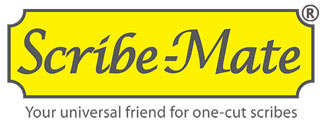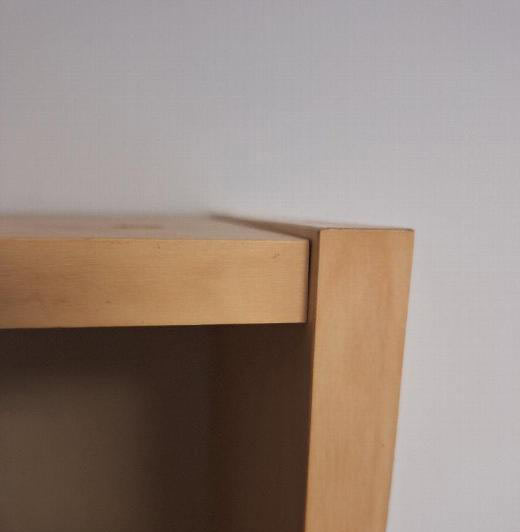


There are a number of useful ways the Scribe-Mate tool can help you achieve a perfect scribe line on a fillet first time, every time.
Figure 1
First, establish the size of the pre-drilled hinge plate holes in the cabinet. They are usually 5mm or 3mm. The scribe tools have two location pins which are ‘stepped' from 5mm to 3mm. If the holes are 5mm diameter, use the scribe tools as they are. Locate the scribe tools into the holes and secure using the bugle head screws provided. Do not over tighten. Place the prepared fillet into the blocks ensuring the clean edge is tight to the blocks and secure with the clamps. Scribe your line and cut to the line. You will discover your fillet will fit neatly first time and the need for caulking is minimal – if at all.
If the hinge plate holes are 3mm diameter, attach a shim over the location pins, secure the blocks and proceed as above.
Figure 2
1. Ensure the location pins on the scribe tool are facing into the cabinet and position a ‘shoulder' of the scribe tool into a corner of the cabinet. Secure as described above and follow the procedure.
Figure 3
2. Fit a location plate onto the scribe tool opposite the location pins. Place the block in selected position and secure to the cabinet. It is vital you remove the location plate from the scribe tool before attaching the fillet, or you will mark and cut the fillet 3mm too narrow.
Figure 4

Position a shoulder of the scribe tool into a relevant inside corner (top or bottom) of the cabinet, with the location pins facing into the cabinet. Fix a second block in the opposite corner, and lock the fillet in position.
For a long fillet use a third scribe tool – using a location plate as described in Fig 3.
It is not uncommon for a small step to be between the sides and tops and bottom panels of cabinets. To overcome the problem, it is necessary to
(1) Establish the size of the step.
(2) Select shims of identical thickness.
(3) Place a shim between each scribe tool and the fillet.
(4) Mark scribe line and cut to the line.